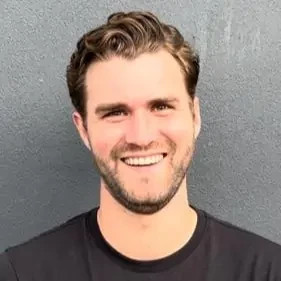I got the feedback that I wasn't concise enough both in case and in fit interview.
How can I improve it in a short time?
It sounds easy to do but seems to be hard to change everything in short time window.
I got the feedback that I wasn't concise enough both in case and in fit interview.
How can I improve it in a short time?
It sounds easy to do but seems to be hard to change everything in short time window.


A lot of candidates have the same issue. It can be solved with deliberate practice, i.e. exercises that are tailored and focused on your specific weaknesses.
Without knowing your specific problem, I have two suggestions that should be able to help.
1. As a consultant, I suggest you always start with conclusion/recommendation, you lay out the structure on how you reached that conclusion (i.e., it is supported by X, Y and Z) and then you go through the facts that support each branches of that structure.
How do you practice this in reality? Use the framework I just gave you and use it when reading exhibits. Another option is to do issue trees (you should do both types of practice).
You can read Barbara Minto's Pyramid Principle. It helps in understanding how you should communicate. But if you don't have much time, focus on practice only. Deliberate practice beats “reading about the subject” on any given day.
2. You should practice writing in bullet points. This is what consultants do the whole time. Now, there is something specific to writing in bullet points. You have to write them as short as possible. After that imagine it is still too long (e.g. you don't have enough space in a slide or page) and need to further summarize / cut words.
Now do this with each of your “stories” (and yes, you can use the STAR or SCR frameworks) and “why's” (why consulting? why this company? why you?)
3. In my experience, many candidates are not concise because they don't know when to stop. They convey the idea, and then they explain in several times repeating themselves or giving unrequested and unnecessary detail.
What you have to do is to “hear yourself", understand when you are doing this and STOP. Instead of repeating a second time (or going down to the 3rd or 4th layer) you should ask the interviewer if you were clear and if the interviewer wants you to give more detail on any part of your answer.
Feel free to reach out if you believe you would benefit from a session focused solely on this specific improvement. By the way, this is a skill for life!

Hi there,
It's easy to make something complicated, hard to make something simple. How to fix this?
Take a few seconds - gather your thoughts. Perhaps right them down. Take a quick breather to better formulate and then articulate your thoughts
Use signposting - Always preface what you will be saying. For example, when brainstorming you can say "I'm thinking about this in three main ways: A, B, and C. Within A we can look at..."
Practice with a coach - Other PrepLounger are fantastic practice but they are generally too nice! you need a coach who will really hit back and work with you to improve your answers.

Hi there,
That's an excellent question. Here are a few thoughts:
1. Pause before you answer. Take time before you answer to structure your questions. You can usually take more time than you imagine you are allowed to. An interview is not a speed race. They are rather interested in your providing good quality answers rather than storming through the case.
2. Speak slower. As you speak slower you'll have more time to think and you'll only focus on the important things. This will also help the interviewer follow you better
3. Record yourself. When doing cases or practicing the stories for the fit interview, record yourself while speaking. Then listen to the recording and figure out where you provide too many details or where you are not structured enough.
Hope all of this helps! Happy to provide you with more support!

Hey,
This question has been answered before and there are plenty of threads in the Q&A forum. Have a look at these:
Try to bring some of the subtle changes straightaway and you will improve over time.
Consider a dedicated session on communication/storytelling with a coach of your choice.
All the best!

Hi there. A good way to practice conciseness is that, instead of start talking right away, you first write down the things you want to talk in bullet points. Then you can talk through the bullet points. After some practice you will realise that you can naturally form bullet points in your head before start talking.
The reason for most people’s rambling is that they don’t really know exactly what’s the point they are trying to communicate so they use lots of meaningless content to fill the time void. So before you start communicating, always know exactly what’s the key message you’re trying to deliver.
Hope this helps!

Hi!
The best way is to adopt a top-down communication where you first touch all the main insights of your story/recommendation and then you go deeper into each sub-component.
Focus on fundamental elements (e.g. root causes) and cut non-essential parts.
Hope this helps.
Best,
Anto














